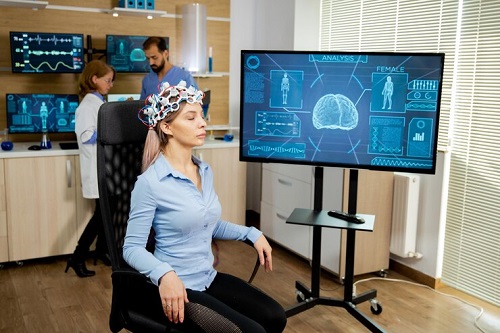Introduction:
Artificial intelligence (AI) has emerged as a trans formative force in various industries, including healthcare. In medical imaging, AI algorithms are demonstrating remarkable potential in disease detection, image reconstruction, and automated analysis. This blog post delves into the applications of AI in medical imaging, exploring how these technologies are revolutionizing the field and improving patient care.
1. Disease Detection and Diagnosis:
One of the most significant applications of AI in medical imaging is disease detection and diagnosis. AI algorithms can analyze large volumes of medical images, identifying subtle patterns and abnormalities that may be missed by the human eye. This capability has led to the development of AI-powered tools that can detect diseases such as cancer, heart disease, and neurological disorders at earlier stages, enabling timely intervention and improved patient outcomes.
2. Image Reconstruction and Enhancement:
AI algorithms are also playing a vital role in image reconstruction and enhancement. By utilizing advanced techniques such as deep learning and convolutional neural networks, AI can improve the quality and resolution of medical images, making them easier to interpret and diagnose. This is particularly beneficial in cases where traditional imaging techniques may produce noisy or unclear images, such as in MRI or CT scans.
3. Automated Image Analysis and Quantification:
AI algorithms can automate various tasks in medical image analysis, such as segmentation, measurement, and quantification. This streamlines the workflow for radiologists and other medical professionals, enabling them to focus on more complex and critical aspects of patient care. Automated image analysis also reduces the risk of human error and improves the consistency and accuracy of diagnostic interpretations.
4. Clinical Decision Support Systems:
AI-powered clinical decision support systems (CDSS) are being developed to assist healthcare providers in making more informed and accurate diagnoses. These systems leverage AI algorithms to analyze patient data, including medical images, electronic health records, and laboratory results, to generate personalized treatment recommendations and guidelines. CDSS can also provide real-time guidance during procedures, such as surgery or interventional radiology, improving the precision and safety of these interventions.
5. Accessibility and Cost Reduction:
AI has the potential to make medical imaging more accessible and cost-effective. By automating tasks and reducing the need for specialized expertise, AI-powered imaging tools can be deployed in remote and underserved areas, improving access to essential healthcare services. Additionally, the efficiency gains resulting from AI can lead to shorter wait times and lower costs for patients.
Challenges and Future Directions:
Despite the significant progress made in AI-powered medical imaging, several challenges remain. These include the need for robust and explainable AI algorithms, ensuring data privacy and security, and addressing ethical considerations related to AI in healthcare. As the field continues to evolve, further research and collaboration among researchers, clinicians, and regulatory bodies will be crucial to harness the full potential of AI in improving patient care.
Conclusion:
Artificial intelligence has brought about a paradigm shift in medical imaging. AI algorithms are demonstrating remarkable capabilities in disease detection, image reconstruction, automated analysis, and clinical decision support. These technologies have the potential to revolutionize healthcare by improving diagnostic accuracy, efficiency, accessibility, and cost-effectiveness. As the field of AI in medical imaging continues to advance, we can expect even more transformative applications and breakthroughs that will ultimately lead to better patient outcomes.
